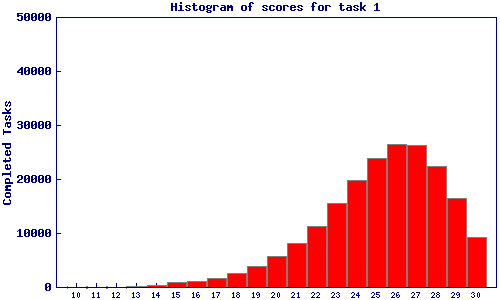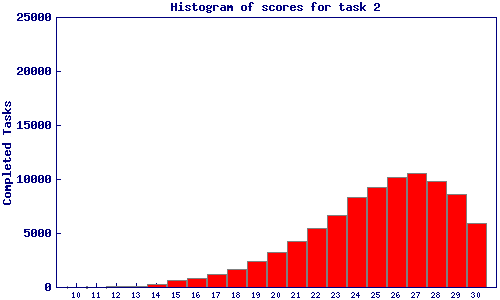Thank you to everyone who has participated in our research!
Since the first listening test was launched at the end of January 2006 it has been taken 195968 times. The second test was added in 2007 and has been taken 89590 times.
This page contains a summary of the study's progress. The histograms and mean data for each task are still shown below.
Amusia: the story so far...
For most of us the appreciation of music is acquired effortlessly, much like language, in the early years of our lives. This appreciation forms an important social, cultural and emotional role, indeed one that is so central to everyday life that it is difficult for us to imagine being without.
However, people with a disorder recently termed 'congenital amusia' fail to recognize common tunes from their culture, do not hear when notes are 'out of tune' and sometimes report that music sounds like a 'din' or 'banging'. At a perceptual level, congenital amusia is most commonly associated with finding it difficult to notice changes in pitch.
People who experience these phenomena when listening to music are otherwise socially, emotionally and intellectually normal. Famous figures in history, Milton Friedman and Che Guevara, are thought to have been afflicted with the disorder, though such cases must remain anecdotal.
Although difficulties in other areas of sound perception are not immediately obvious, current studies are investigating whether the processing of contours in speech, and other higher-order patterns of sound, might be affected.
The First Case Study of Congenital Amusia
The first reported case of amusia was published more than a century ago but it is only within the last five years that case studies have been anything other than anecdotal. While many people claim to be 'tone-deaf, this is typically a label for people who cannot sing in tune, and it is estimated that only about 4% of the population have perceptual difficulties with listening to music.
The term 'congenital amusia' was introduced as an alternative to tone-deafness. It is now possible to systematically assess different aspects of people's musical listening ability using the Montreal Battery for the Evaluation of Amusia, designed by Isabelle Peretz and colleagues in Canada.
How Does Amusia Manifest?
While most normal listeners can judge the direction of a pitch change with intervals smaller than a semitone, people with amusia often require the change to be much greater. In severe cases, a person with amusia might require two notes to be very far apart in pitch, for instance, the distance between the first two notes of Somewhere over the Rainbow, before they can hear them as different.
Given that most pieces of Western music move in small steps - a semitone is a very commonly occurring interval - it is not surprising that for those with amusia, one song sounds much the same as another. However, this inability to hear small changes in pitch is clearly not the whole story, since those with amusia also perform poorly when required to tell the difference between two musical phrases, even when the constituent pitch changes of the phrases can all be heard. This shows that the relationship between the ability to hear a pitch change between two notes in isolation, and the ability to hear a single change in the context of a whole phrase of music is a complex one.
Amusia and language
Amusics have normal intellectual functioning and do not appear to have any difficulty in understanding speech, including the melody of speech. The intact ability to hear the music of speech may be related to the fact that, in languages such as English, pitch changes are often several semitones and commonly co- occur with changes in stress and timing, therefore problems in hearing subtle pitch changes will not be a limiting factor. In the future, it will be important to investigate whether amusics who speak a tonal language, such as Mandarin, are sensitive to pitch changes in a linguistic context, where subtle changes can profoundly alter semantic meaning.
Amusia and rhythm
While most amusics appear to have no problems with rhythm perception, this aspect of the disorder seems variable (Che Guevara was notoriously useless on the dance floor, as depicted in the film The Motorcycle Diaries). One study found that those with amusia could not spot a subtle change in pitch but were able to spot deviations in time. However, other researchers have found that problems with timing are seen when the pitch context is more complex and have suggested that difficulties with pitch may have knock-on consequences for the development of rhythmic skills.
Do those with Amusia have different Brains?
Amusics do not have a history of neurological damage and structural brain imaging using magnetic resonance imaging (MRI) does not reveal any obvious anatomical differences. However, the technique of voxel-based morphometry allows MRI data from two groups, for example amusics versus non- amusics, to be compared in terms of differences in volume of grey and white brain matter.
A recent study using this approach revealed subtle differences in white matter (the neural connections) between amusics and control participants in the right frontal cortex, suggesting that abnormalities occur in areas outside of the auditory cortices. We know from neuroimaging studies that this area is involved in musical perception, and seems to be particularly important for the sequential aspect of musical listening.
Brain development is shaped by nurture, as well as nature. Therefore, anatomical differences between amusic individuals and those with normal music perception do not rule out explanations that suggest the cause of amusia is a lack of exposure to music. However, the fact that infants display high levels of musical sensitivity implies that the degree of exposure required in order for normal musical development is minimal.
The most compelling support for a genetic cause of amusia comes from a family study where amusia was found in 39% of close relatives of amusic individuals, compared with only 3% of the relatives of control individuals. Studies into amusia family trees set the stage for the isolation of candidate genes or sets of genes that may underlie amusia.
Conclusions and future directions
Research to date has characterized congenital amusia as a deficit of tune, rather than time. This may reflect a bias in the participants of most studies since many researchers have specifically recruited those with tune-based abnormalities. Developmental deficits in timbre and timing are also logically possible; indeed there have been anecdotal reports from individuals who cannot keep time or who complain that music sounds like 'banging' or 'noise'.
Exploring potential subtypes of amusia will reveal the extent to which other aspects of musical perception are connected to difficulties with pitch, and whether they have an impact on higher-order perceptual and cognitive abilities.
The study of amusia sets in sharp relief the perceptual and cognitive abilities which most of us take for granted and allows us a unique chance to investigate how musical perceptual ability develops, from the level of the gene through to brain development and the emergence of a complex and fundamental human behaviour.
If you would like to assess your musical listening abilities, or take part in future projects with our team, part of the Montreal Battery for the Evaluation of Amusia is available at www.delosis.com/listening/home.html. As a guide, a score below 22 would be in the amusic range, though the cut-off varies with age.
McDonald,C., & Stewart, L. (2008). Uses and Functions of Music in Congenital Amusia Music Perception, 25 (4); 345-355.
Stewart,L. Von Kriegstein, K., Dalla Bella, S., Warren, J.D. & Griffiths,T. (2007). Disorders of Musical Cognition. Handbook of Music Psychology, Oxford University Press (in press)
Stewart,L. & Walsh, V. (2007). Music Perception: Sounds Lost in Space. Current Biology ; 17(20); R892-R893.
Stewart,L. Von Kriegstein, K., Warren, J.D. & Griffiths, T. (2006). Disorders of Musical Listening Brain, 129; 2533-2553
Stewart,L. (2006). Congenital Amusia Current Biology, 16(21); R904-6
Stewart,L. (2005). Pitch Fever BBC Music Magazine, October; 36-40
The Guardian (July, 2007)
BBC Radio 4 (December, 2006) [audio]
The Times (September, 2006)
BBC News Website (October, 2006)
BBC Radio 4 (January, 2006) [audio]
New York Public Radio (October, 2005) [audio]
If you are interested in further reading on this topic, the following references provide a good starting point
Foxton, J.M., Dean, J.L., Gee., R., Peretz, I., and Griffiths, T.D. (2004). Characterization of deficits in pitch perception underlying 'tone deafness'. Brain 127, 801-810.
Foxton, J.M., Nandy, R.K., and Griffiths, T.D. (2006). Rhythm deficits in 'tone deafness'. Brain Cognition., in press.
Grant-Allen. (1878). Note-deafness. Mind 10, 157-167.
Hyde, K.L., and Peretz, I. (2003). 'Out- of- pitch' but still 'in-time'. An auditory psychophysical study in congenital amusic adults. Annals of the New York Academy of Sciences. 999, 173-176.
Hyde, K.L., Zatorre, R.J., Griffiths, T.D., Lerch, J.P., and Peretz, I. (2006). The brain morphometry of congenital amusic individuals. Brain, in press.
Kalmus, H., and Fry, D.B. (1980). On tune deafness (dysmelodia): frequency, development, genetics and musical background. Annals of Human Genetics 43, 369-382.
Peretz, I., Ayotte, J., Zatorre, R.J., Mehler, J., Ahad, P., Penhune, V.B., and Jutras,B. (2002). Congenital amusia: a disorder of fine-grained pitch discrimination. Neuron 33, 185-191.
Peretz, I., Champod, A.-S., and Hyde, K.L. (2003). Varieties of musical disorders. The Montreal Battery of Evaluation of Amusia. Annals of the New York Academy of Sciences. 999, 58-75.
Peretz I, Cummings S, Dube MP: The genetics of congenital amusia (or tone deafness): A family aggregation study. American Journal of Human Genetics 2007, 81:582-588.
Zatorre, R.J., Evans, A.C., and Meyer, E. (1994). Neural mechanisms underlying melodic perception and memory for pitch. Journal of Neuroscience. 14, 1908-1919.
The average score on this test is 25.15 .
The histogram below shows the distribution of the scores achieved so far.

The average score on this test is 24.97 .
The histogram below shows the distribution of the scores achieved so far.
